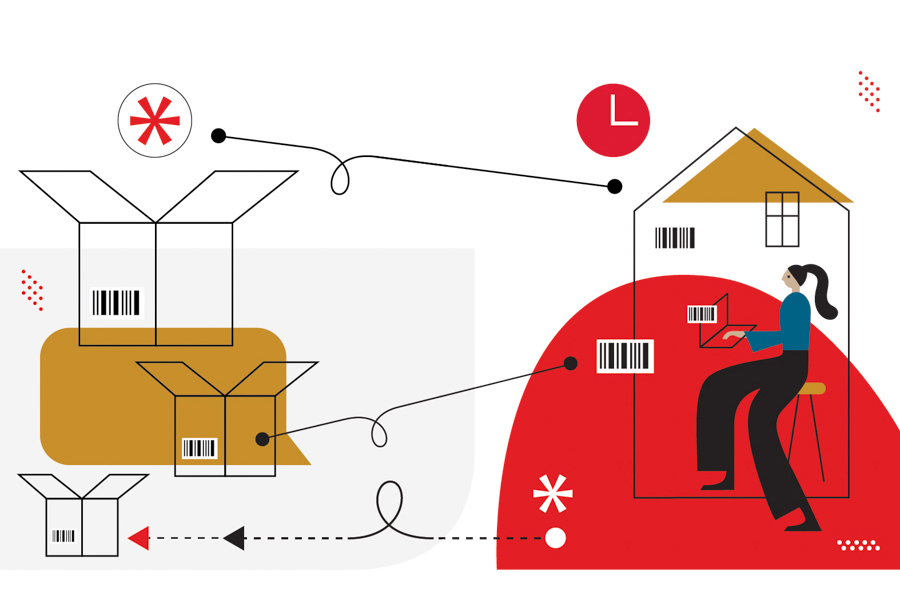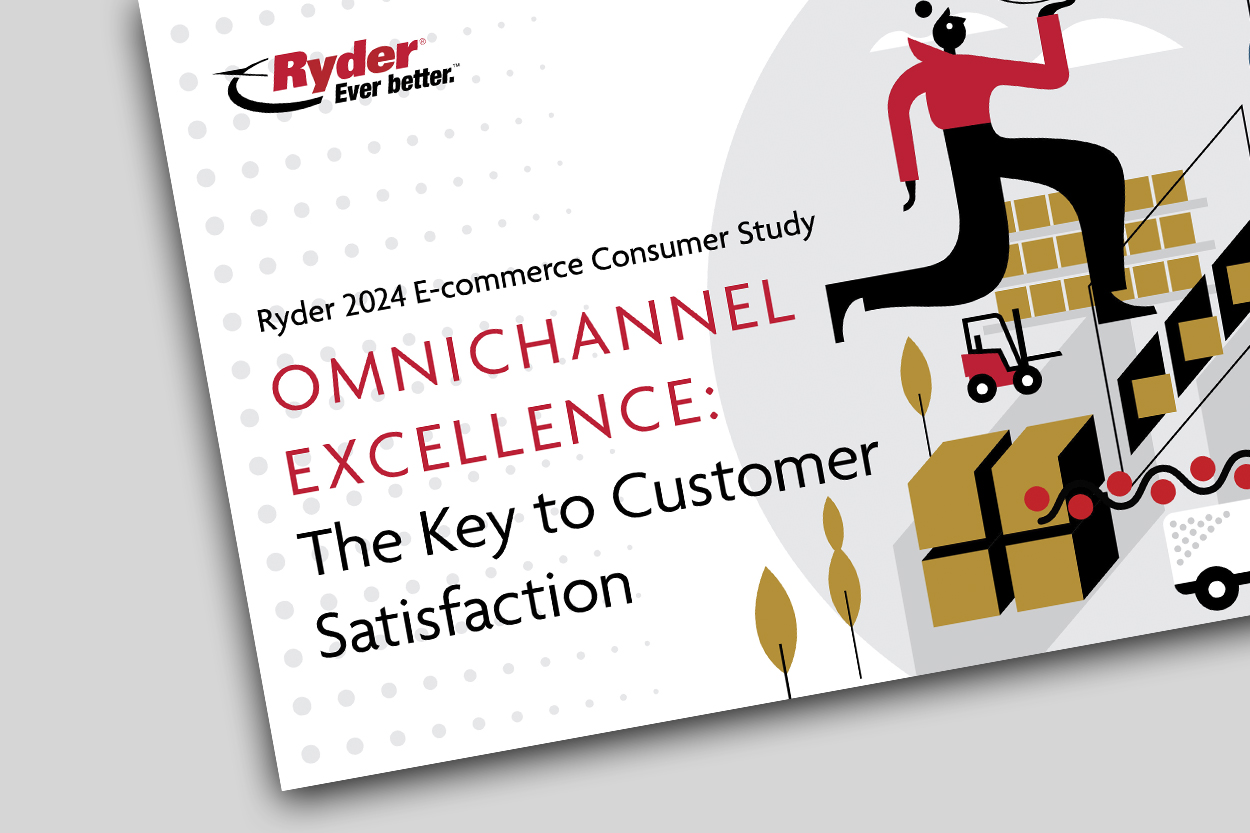About 48% of consumers say they abandon their shopping carts at the final checkout stage if faced with unexpected shipping fees. A seamless, cost-free shipping experience can be the difference between clinching a sale and losing a potential customer to a competitor.
Nonetheless, the path to offering free shipping is laden with challenges beyond inflation and freight pricing. As operational costs soar, businesses grapple with the rising expenses associated with logistics, packaging, and overall supply chain management.
This inflationary pressure affects margins and complicates the quest to meet customer expectations for free shipping. Retailers find themselves at a crossroads, striving to create an attractive consumer experience while navigating the financial realities that dictate their operational capabilities.
That's why, in this article, we'll dive into striking the intricate balance between meeting growing customer demands for free shipping and juggling rising costs.
We'll explore the psychology behind free shipping, its impact on operational costs, and strategies you can use to offer free shipping without sacrificing profitability.
Understanding the Psychology Behind Free Shipping
According to Retail Dive, about 75% of American consumers say that free shipping is near the top of the list when deciding where to shop, valuing it far above those who cite same or next-day delivery.
From a psychological standpoint, "free" is a powerful marketing trigger. The term creates an immediate feeling of advantage and can evoke excitement or joy in consumers. It reduces cognitive dissonance—shoppers justify spending by emphasizing that they're saving on shipping rather than spending on shipping costs.
This connection between getting something for "free" and achieving a positive shopping experience amplifies the likelihood that customers will proceed with their purchases.
Free shipping is a pivotal factor in consumer purchasing decisions: According to the Baymard Institute, additional costs at the checkout stage comprise nearly 70% of cart abandonment rates.
Free shipping can mitigate cart abandonments and encourage more consumers to complete their purchases. Eliminating shipping fees taps into the psychology of perceived value: Customers feel they are securing a better deal when they aren't faced with extra costs.
And when customers feel as though they've secured the best deal, they're far more likely to complete their purchases and increase your conversion rates.
The "Amazon Effect"
Major e-commerce platforms, notably Amazon, have raised the customer expectations bar considerably.
Amazon's Prime Membership model, which offers customers free shipping on numerous products, has effectively reshaped market standards.
Many customers now expect free shipping as a norm rather than a perk when shopping online, even from smaller retailers.
This shift in expectation means that e-commerce businesses must respond creatively to stay competitive. Failure to offer free shipping or satisfy customer expectations in one way or another can lead to abandoned carts and lost sales, as consumers are inclined to seek alternatives without shipping fees.
Ultimately, today's competitive landscape has evolved into a battleground where free shipping is a key differentiator. Companies that embrace free shipping, whether through minimum purchase thresholds or limited-time offers, foster higher customer loyalty and retention levels.
Consumers often associate free shipping with better service and value, reinforcing trust and increasing the likelihood of repeat business.
As consumers have become accustomed to the conveniences established by industry leaders like Amazon, the expectation for free shipping will continue influencing purchasing behavior.
Inflation’s Impact on Shipping Costs
Inflation significantly influences various components of shipping costs, leading to higher operational expenses across the industry.
Three key elements include the following.
1. Fuel Prices
Fuel is often the most substantial component of transportation costs. As inflation rises, the cost of crude oil tends to follow suit. Fluctuations in geopolitical stability, OPEC decisions, and refining capacities can all exacerbate fuel prices.
These increased fuel costs lead shipping companies to adjust their pricing structures, often through fuel surcharges passed on to consumers and businesses.
2. Labor
Labor costs are inherently tied to inflation as wages typically rise to match the cost of living. Shipping and logistics sectors are labor-intensive, so wage increases can significantly impact overall operational budgets.
A shortage of skilled labor, exacerbated during and following the pandemic, further inflates these costs. Companies may need to offer higher salaries or additional benefits to attract and retain workers, translating to higher shipping rates.
3. Packaging Materials
The cost of raw materials for packaging, such as cardboard, plastics, and adhesives, has experienced significant inflationary pressure. Mining disruptions, supply chain bottlenecks, and increasing global demand can all contribute to higher raw material costs.
For example, in 2022 alone, the price of corrugated container board rose $60 to $70 per ton.
As companies look to optimize packaging to reduce costs, they also face pressure to enhance sustainability, which increases expenses.
Several overarching economic factors also contribute to inflation, significantly influencing supply chains and shipping logistics:
- Supply chain disruptions: From port congestion to labor shortages and global trade tensions, disruptions have increased costs and delayed shipping times.
- Consumer demand spikes: Post-pandemic recovery saw a surge in consumer demand for goods, straining supply chains. High demand, coupled with limited supply, often leads to inflated prices.
- Monetary policies: Central banks’ monetary policies, such as low interest rates and quantitative easing, can stimulate inflation. These policies led to more money flow and heightened spending, increasing demand for shipping and transportation services.
Profit Margins Under Pressure
As shipping costs rise, e-commerce businesses face critical profitability challenges:
- Absorbing costs vs. passing them on: Many e-commerce companies adopt free shipping as a marketing strategy to attract customers. However, absorbing rising operational costs squeezes profit margins. Companies must carefully analyze whether to raise prices, implement minimum purchase requirements for free shipping, or utilize other strategies to offset shipping costs.
- Customer expectations: With more consumers expecting fast and free shipping, companies risk losing business if they don’t adapt. It’s a balancing act: Companies need to enhance shipping efficiency (e.g., through automation and better inventory management) while managing cost increases.
- Long-term impacts: Companies that fail to adapt their shipping strategies may lose competitiveness in the market. Potential long-term impacts include reduced customer loyalty if shipping becomes inconsistent or slow and financial strain on profitability if operational costs continue to climb without corresponding revenue adjustments. A loss in revenue can also lead to operational cuts that impact service quality.
Inflation poses significant challenges for shipping costs, influencing fuel prices, labor expenses, and packaging materials.
Navigating these challenges requires a well-thought-out strategy balancing operational sustainability and customer satisfaction for e-commerce businesses.
Adapting to economic realities means embracing innovative logistics strategies, optimized pricing structures, and enhanced transparency with customers about shipping costs and timelines. All are critical for long-term success in an inflationary environment.
Strategies to Offer Free Shipping Without Sacrificing Profitability
Even if you're a small retailer, you can still offer free shipping without breaking the bank.
Here's how.
Threshold-Based Free Shipping
This involves setting a minimum purchase threshold for free shipping that encourages customers to add more items to their cart to avoid shipping fees.
This increases average order value (AOV) and helps businesses offset shipping costs.
To determine your optimal threshold levels:
- Analyze average order value (AOV): Track your AOV over time. For instance, if the AOV is $50, a threshold of $70 for free shipping might be reasonable, encouraging customers to add approximately $20 worth of additional items.
- Analyze customer behavior and trends: Utilize historical sales data to understand what value customers typically reach during shopping trips. If customers often purchase multiple products, a threshold just above the AOV can further incentivize larger purchases without feeling excessive.
- Test and adjust: Implement A/B tests where a portion of customers see different shipping thresholds. Analyze conversion rates and sales data post-implementation to fine-tune the threshold based on what drives the most significant increase in cart size.
Let’s look at an example: A clothing retailer offers free shipping for orders over $75. If their current AOV is $50, they could strategize promotions such as discounts on accessories or bundle deals that push order values up to $75, effectively enticing customers to spend just a little more.
Membership and Subscription Models
Subscription models, like Amazon's Prime Membership, create a consistent revenue source. Customers are more likely to shop frequently because their membership fees cover shipping costs.
These programs, in turn, build increased customer loyalty. Members feel a sense of exclusivity with memberships and are more inclined to buy, leading to higher customer retention rates and lifetime value. With a subscription model, you can better forecast demand and inventory needs, leading to improved supply chain management.
For example: A meal kit service offers a subscription for free shipping on weekly deliveries. Customers who sign up are more likely to opt for additional meals or snacks, further boosting their weekly spending.
Optimize Shipping and Fulfillment
All of this sounds great, but your business still has to cover fulfillment and shipping, so for any free shipping program to work, these must be optimized.
Here’s how:
- Optimize packaging: Use packaging that minimizes wasted space. For example, a shoebox-style shipping package can reduce dimensional weight pricing, leading to significant cost savings.
- Zone skipping: Consolidate shipments to the same destination before handing them off to carriers to reduce the shipping distance and costs. This is often managed through fulfillment centers strategically placed closer to major markets.
- Negotiate carrier rates: Establish relationships with several shipping providers and negotiate rates based on volume. Don’t underestimate your shipping leverage: Consistent shipping volumes can sometimes lead to significant discounts.
- Embrace automation tools to streamline fulfillment processes, optimize inventory management, and enhance order processing accuracy. Integrating inventory management systems with order management platforms leads to faster processing times, reduced errors, and improved efficiency.
Leverage Data Analytics
Data is your most valuable business asset. Analyzing your data leads to significant insights that can help you optimize your shipping costs and overall operational performance.
- Utilize customer data: Constantly analyze customer behavior data to identify peak shopping times, popular products, and spending habits. This will inform free shipping promotions tailored to behavior like "Buy More and Save" campaigns during identified peak times.
- Personalize your marketing by leveraging data analytics to segment your audience. This will allow you to offer personalized shipping options that cater to different customer preferences and maximize the appeal of shipping incentives.
- Balance customer satisfaction and cost management: By understanding patterns, you can better align your free shipping offers with customer buying behavior to provide incentives that drive sales without significantly impacting profit margins.
Incorporating thoughtful shipping strategies creates a comprehensive approach to enhancing customer loyalty and increasing sales. Each strategy not only improves customer retention but also empowers businesses to manage costs effectively while satisfying customers with the shipping choices they demand.
The Importance of Setting Customer Expectations
Transparency is essential to setting realistic customer expectations for shipping. A recent report published by Shopify illustrates that 74% of consumers expect to see shipping costs before deciding on a purchase.
They want to know how much shipping will cost, see how long it will take to get their purchase, and be notified if their order is delayed.
Setting expectations upfront also saves on support costs, so add a shipping information page to your website that lists the shipping options you offer, average order processing times, and what customers can do if their orders are delayed.
Educate Your Customers
When shipping costs are on the rise, businesses must educate their customers on the value they receive through shipping services.
Here are some ways to do this:
- Content marketing initiatives: Use blog posts or articles to explain the logistics involved in shipping, including costs related to transportation, packaging, and handling. This educational content can help demystify pricing and highlight the complexities of shipping.
- Infographics and videos: Visual media effectively explains shipping processes and illustrates why specific fees apply. For example, a video showing the journey of a product from the warehouse to a customer's doorstep can make shipping details tangible and relatable.
- Newsletters and email updates: Regularly communicate with customers about updates to shipping policies, including explanations for any price changes. Highlight how these changes help maintain service quality.
- Customer feedback loops: Encourage customers to provide feedback on their shipping experiences. Use their input to refine communication and educate them on your shipping processes.
- Social media engagement: Share customer stories or testimonials emphasizing positive shipping experiences. This builds confidence in your pricing and reinforces trust in your brand. According to recent research, consumers love unboxing videos.
- Promotions framed around free shipping effectively heighten urgency and encourage action. Phrases like "Free Shipping Today Only!" can compel customers to act quickly out of fear of missing out. It's a classic scarcity strategy that plays into consumers' emotional decision-making processes.
The Future Outlook
The current economic landscape is marked by fluctuating inflation rates, which can pose challenges and opportunities for e-commerce businesses. Continued inflation could lead to increased costs for goods, shipping, and services, directly impacting profit margins.
Navigating this potentially inflationary environment requires a flexible and proactive approach to shipping strategies.
The potential for continued inflation and its implications include increased operating costs, consumers becoming more price-sensitive, and higher shipping costs.
To remain competitive, e-commerce businesses must be flexible and agile. Consider the following:
- Dynamic shipping policies that adjust to changing costs and consumer expectations can be beneficial. This might include tiered shipping options, offering free shipping on specific minimum orders, or introducing loyalty programs that reward frequent customers.
- Use fulfillment centers. Partnering with a fulfillment vendor reduces shipping times and costs through their negotiating power and optimized operations.
- Transparency about shipping costs and potential delays can build consumer trust. Keeping customers informed about their purchases fosters loyalty, even in challenging economic times.
Emerging Trends
Trends that will shape free shipping policies include sustainability, fast delivery, subscription models, and technological integrations. These will lead to informed decisions that refine your cost management approach.
In an inflationary environment, e-commerce businesses must adapt their shipping strategies.
By adopting a flexible approach, businesses can better navigate challenges and seize opportunities. Additionally, aligning with emerging trends like sustainability and fast delivery can meet customer demands and serve as a competitive advantage.
Proactive planning and innovation in shipping strategies are essential to maintaining a strong foothold in the evolving e-commerce landscape.
Navigating the complexities of free shipping in an inflationary environment poses significant challenges for e-commerce businesses. As consumers increasingly demand no-cost shipping as a standard expectation rather than a luxury, retailers must find creative solutions to balance operational expenses and profitability.
Employing threshold-based free shipping, transparency in shipping costs, and leveraging data analytics can empower businesses to enhance customer loyalty while simultaneously managing rising expenses.




